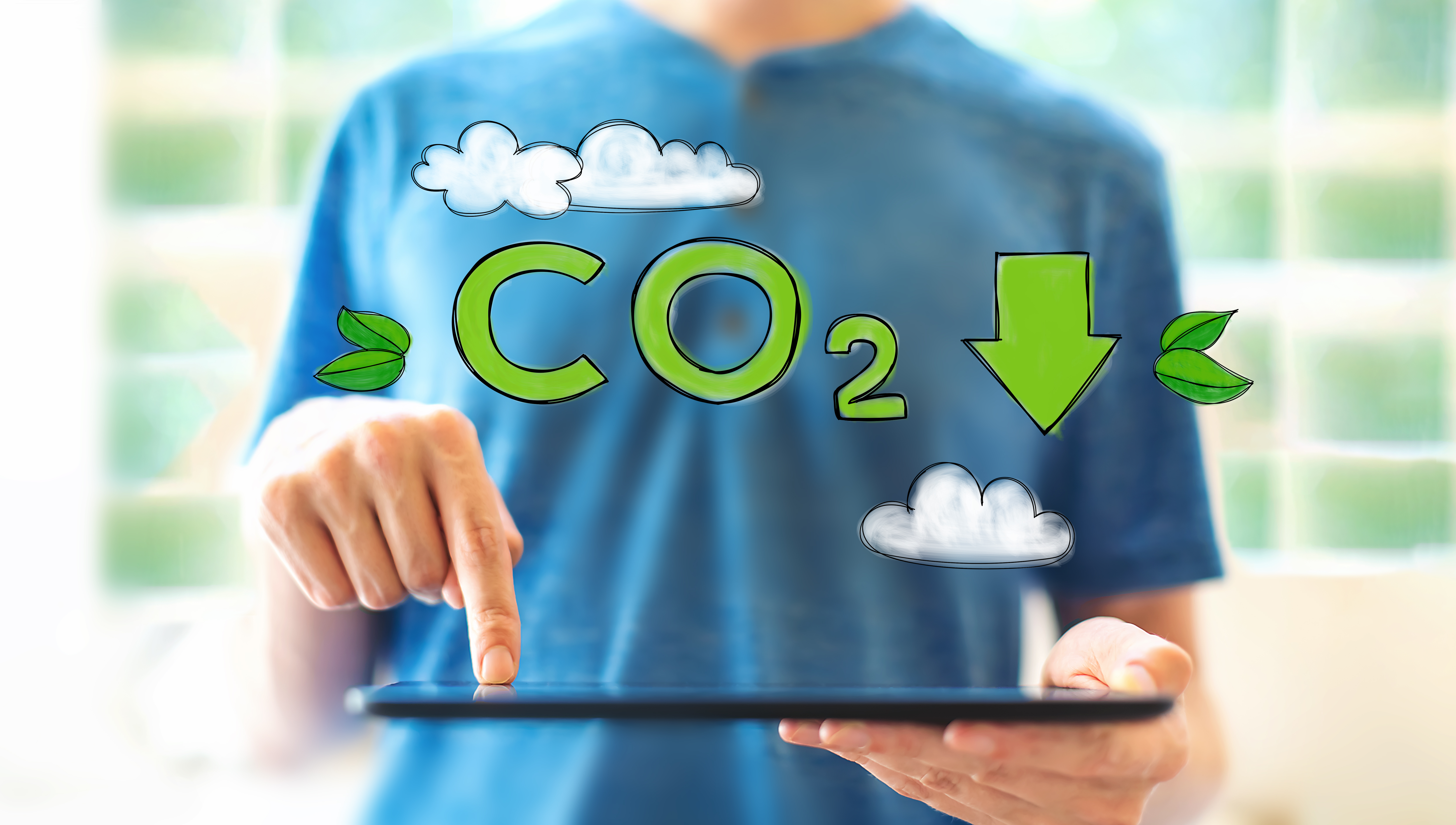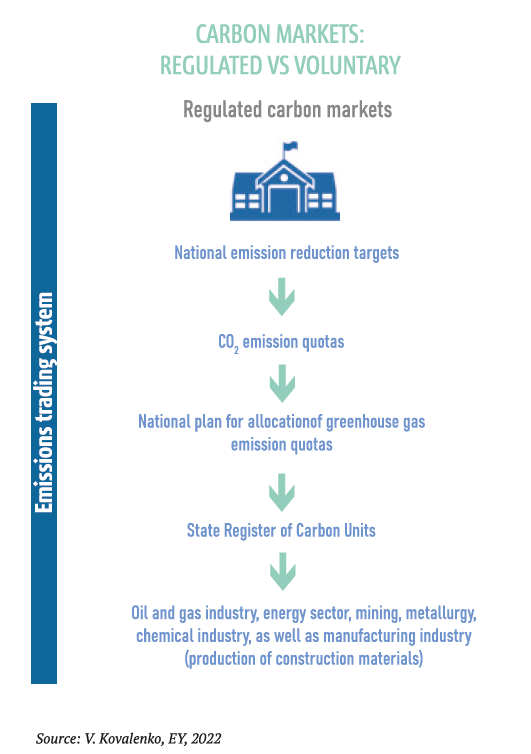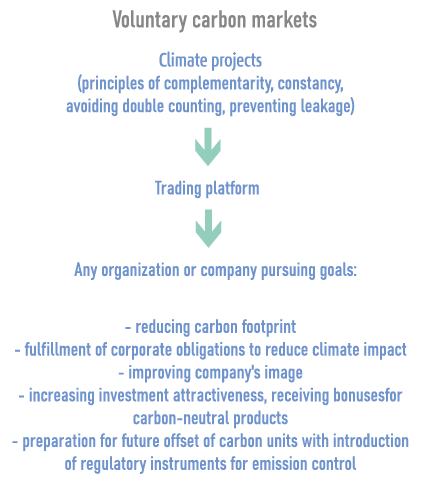Analytics21.12.2022
Voluntary carbon market: concept, examples and potential

Timur Shalabayev, Executive Director, RES Association "Qazaq Green"
Against the background of the global energy crisis, which of traditional energy sources, the climate agenda, and the issue of transition to renewable energy sources in Kazakhstan remain Important aspects of sustainable development. More and more companies In the corporate sector are setting for themselves the task of reducing their carbon footprint and are expressing Interest both In implementing low-carbon projects and In consuming “clean” energy. At the same time, one of the tools for reducing emissions Is carbon offset- activity or activities aimed at reducing greenhouse gas emissions and (or) Increasing absorption of greenhouse gases.
CARBON MARKETS
There are two types of carbon offset markets: regulated and voluntary.
An example of a regulated market in Kazakhstan is the Emissions Trading System, which was launched in pilot mode in 2013. The amount of emissions of 20,000 tons of carbon dioxide per annum is used as a threshold value, according to which facilities are included in the National Carbon Quota Allocation Plan (NCQAP). Today, the ETS covers (controls by quotas) only carbon dioxide emissions.
Regarding requirements for monitoring, reporting, verification (MRV), an evaluation (calculation) method is used, which assumes verification by a third party.
Thus, the regulated carbon market operates on a top-down basis. According to experts, the reverse bottom-up approach is peculiar to voluntary carbon units market, where pollutants themselves seek to reduce their carbon footprint in order to fulfill corporate obligations to reduce climate impact, improve company's image, increase investment attractiveness, receive bonuses for carbon- neutral products or prepare for future offset of carbon units after introduction of regulatory instruments to control emissions. Currently, Kazakhstan does not have its own standards for voluntary carbon offsets. In this connection, companies use foreign standards.
Experts around the world note great development potential of voluntary offset markets. In 2021, turnover of voluntary offset market set a new historical record - more than $ 1 billion (for comparison: about $ 300 million in 2018, and for the entire existence - $ 6.7 billion), but this is a drop in the bucket compared to forecasts. According to experts, this figure will only grow from $100 billion by 2030 to $550 billion by 2050, that is already comparable to today's turnover of regulated markets.
Taking into account these forecasts, some multinational corporations have already started implementing climate projects independently, both for their own purposes and for further diversification of their revenue. In particular, large oil and gas companies that are consumers at voluntary carbon markets, have already begun to buy projects themselves or large shares in the projects with the intention of protecting themselves from rising prices for carbon units in the future.


WELL-KNOWN STANDARDS AT VOLUNTARY OFFSET MARKETS
According to experts, the most popular international standards for verifying and confirming project effectiveness (85% of the total market) are Verified Carbon Standard (VCS) and Gold Standard (Gold Standard, GS). A new standard, the Global Carbon Council (GCC), is also successfully developing at the market.
Verified Carbon Standard (VCS)
Verra was founded in 2007 by environmental and business leaders who beheld the need for greater quality assurance in voluntary carbon markets. Verra implements many climate programs, one of the main ones is VCS program.
The VCS program allows certified projects to convert reduction and absorption of greenhouse gas (GHG) emissions into tradable carbon credits. Since its launch in 2006, the VCS program has grown into the world's largest voluntary greenhouse gas emissions program. VCS projects include dozens of technologies and measures that lead to reduction of emissions and removal of greenhouse gases, including conservation and restoration of forests and wetlands, management of agricultural land, improving transport efficiency and much more. Currently, almost 1,600 projects have been registered in more than 80 countries, resulting in over 450 million carbon credits, that are equivalent to 98 million passenger cars decommissioned within one year.
Gold Standard (GS)
Gold Standard was established in 2003 by the World Wildlife Fund and other international non-governmental organizations to ensure that projects aimed at reducing carbon emissions are distinguished by the highest level of environmental cleanliness, and contribute to sustainable development. Following the adoption of Paris Climate Agreement and Sustainable Development Goals, best practice standard for climate and sustainable development intervention was launched.
The Gold Standard was based on the principle that measures to combat climate change cannot be unilateral - climate projects should bring significant benefits in the field of sustainable development, in addition to reducing emissions. The success of this approach has urged both UN Clean Development Mechanism (CDM) and other voluntary standards to raise the bar and include sustainable development in some of their climate projects.
By the end of 2021, Gold Standard has issued 191 million carbon credits for projects located in 98 countries around the world: these are 2,600 projects that helped to reduce 209 million tons of CO2 emissions.
Global Carbon Council (GCC)
GCC was established as the first global voluntary carbon offset program in the Middle East and North Africa (MENA) region. This is an initiative of the Gulf Organization for Research and Development (GORD). The program complements existing carbon market programs to address the issue of carbon offsetting in the MENA region.
Carbon credits from projects registered with GCC are called Approved Carbon Credits (ACC). The standard has also been approved by CORSIA (Carbon Offseting and Reduction Scheme for International Aviation) of the International Civil Aviation Organization (ICAO). This gives the program global recognition of honesty in issuing carbon credits.
GCC plans to launch a regulatory framework for the following types of projects:
• Carbon capture and storage,
• Carbon capture and utilization,
• Direct air capture,
• Energy storage projects,
• Desalination plants based on renewable energy sources,
• Water-saving projects,
Scaling up energy-efficient buildings and districts.
Indeed, there is great potential for carbon credits in the MENA region, as solar, “blue” and “green” hydrogen, as well as initiatives to reduce emissions, are gaining momentum. GCC has issued 133,000 credits since 2020, when it began receiving carbon emissions reduction projects. The Council has received about 200 projects, 121 of them have already been evaluated.
The GCC program also hopes to receive about 2,000 project applications by the end of this year. If this happens, as expected, the program will enter the top of the best carbon offset programs.
Experts note that there is a potential for using carbon units to reduce the carbon tax as compensation for emissions. Thus, the results of climate projects verified according to VCSand GS standards are already recognized by regulatory mechanisms for tax reduction in Colombia and South Africa, CORSIA (Carbon Offseting and Reduction Scheme for International Aviation), and Upstream emissions reduction mechanism, which involves offsetting initiatives to reduce emissions during production of fuel.
Carbon offsets and I-REC certificates: What is the difference?
I-REC is a voluntary certification system operating in B2B format. I-REC is an International Energy Attribute Certificate (EAC). I-REC is not a duplication of the PPA contract under which renewable energy facilities sell their electricity to Financial Settlement Center of RE LLP, since I-REC is not involved in the process of buying and selling physical electricity, but creates conditions for trade between companies with the so-called "attribute" of this clean electricity that, according to the terms of this certificate, enables end users to claim that their activities are based on the use of renewable energy. Therefore, in fact, there is no risk of double counting of "green" energy, and no impact of I-REC certificate on PPA contract.
At the same time, it should be borne in mind that I-REC is not an offset. Offset is used to account and compensate direct and indirect greenhouse gas emissions by verifying emission reductions in the framework of additional and external projects. Offsets (confirmed emission reductions) are deducted from the organization's emissions to determine organization's net emissions.
l-RECs are used to solve the problem of indirect greenhouse gas emissions associated with purchased electricity (Scope 2 emissions) by verifying use of a renewable source of electricity with zero or low emissions. l-REC (MWh of renewable energy) is used in calculations of gross market Scope 2 emissions (according to Greenhouse Gas Protocol) based on the emission factor of renewable generation transmitted together with l-REC.
IRENA accepting renewable energy project proposals in Central Asia until August 15
Astana to host Electronica Expo Kazakhstan Electronics Exhibition
WB gives rundown of Azerbaijan's green energy grid volume prospects
US solar sets new records as renewables nearly match natural gas – EIA
‘Wings’ on poles: Bill Gates-backed breakthrough wind turbine facility breaks ground
Perovskite tandem solar cell achieves new efficiency record
Kazakhstan and China endorse draft SCO joint statement on sustainable energy development
Innovative research on organic solar cells for space applications
Kazakhstan and Uzbekistan drive green energy progress in Central Asia
KazMunayGas launches pilot green hydrogen project in Atyrau
How private homeowners in Kazakhstan can make money from solar panels
14 countries are investing in Kazakhstan's renewable energy sector through auctions
How green hydrogen could transform Kazakhstan’s energy sector
IKEA offers ready-to-use solar power systems for balconies
Adani commissions India’s first off-grid green hydrogen pilot plant
Tajikistan unveils green energy roadmap at international conference in Dushanbe
Hydropower projects selected through KOREM Auction in Kazakhstan
EU reaches political deal to simplify CBAM
New research could unlock the potential of bladeless wind turbines
Uzbekistan to launch 16 renewable energy facilities by the end of 2025











